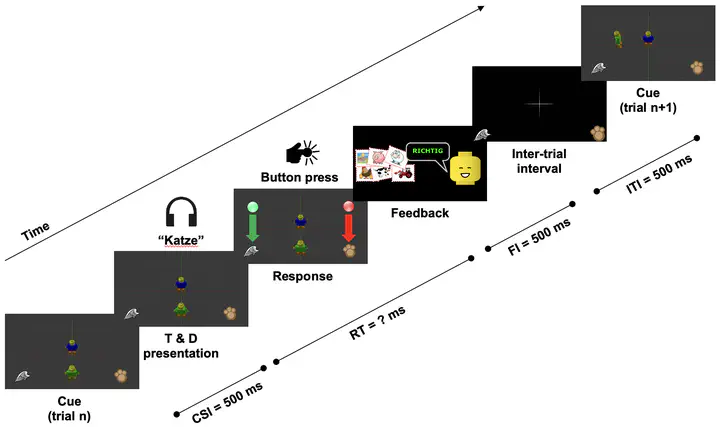Comparing Intentional Switching of Auditory Selective Attention in Children and Adults in an Experiment Suited for Children
 From Loh et al. (2022)
From Loh et al. (2022)
Abstract
A remarkable part of children’s development and educations happens in educational institutions. Acoustic environments in these institutions are usually highly complex and noisy, hence it is demanding to identify relevant target speakers and to ignore irrelevant sounds. Previous research has thoroughly analyzed auditory selective attention in adults, both in a dichotic and a binaural listening environment. Until now, there is little knowledge of auditory selective attention in children. In the present work, the original paradigm was adapted for children by using a task suited for children which included child-oriented elements. Further, the subject’s anthropometric sizes were considered for an aurally-accurate reproduction of the acoustic scene. An experiment with 24 adults and 24 children was conducted analyzing noise and noise-free conditions and various target-distractor distributions in the room among others. The result of this experiment revealed significant differences between adults and children, especially in the way auditory attention was influenced by noise.